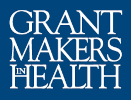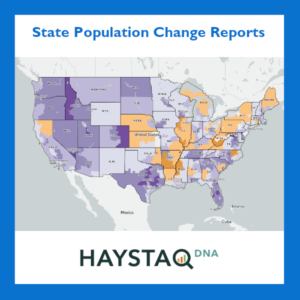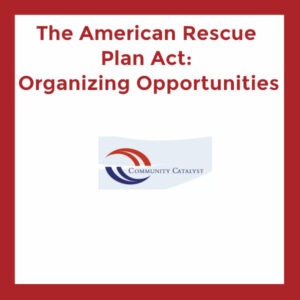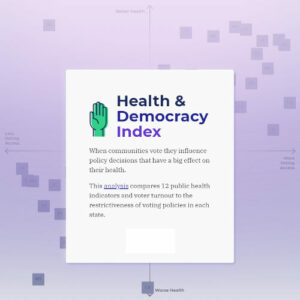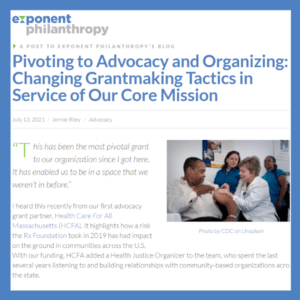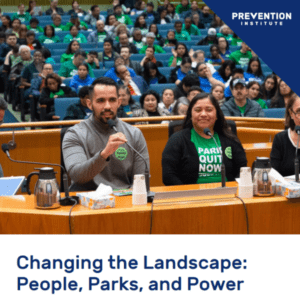Latest Resources
State Population Change Reports
HaystaqDNA has created state reports, available through the Redistricting Data Hub, containing visualizations detailing the changes in total population and population by race and ethnicity for congressional districts, state senate districts, and state house/assembly districts.
ARPA Organizing Opportunities
This toolkit developed by Community Catalyst illustrates how advocates can leverage ARPA funds to spur transformative change and address the unique needs of communities. It includes examples of advocates’ innovation in organizing for ARPA funding in their respective states and communities and also outlines innovative tactics and best practices that may be particularly effective in this moment.
Health and Democracy Index
The Health and Democracy Index presents a wide range of health indicators and correlates these indicators to voting policies using the Cost of Voting Index. It’s designed to provide a shared health equity analysis of voting policy and serve as a tool to strengthen civic and voter participation.
Pivoting to Advocacy and Organizing
This post to Exponent Philanthropy’s blog by Jennie Riley of the Rx Foundation describes the value and impact of the foundation’s shift toward funding advocacy, organizing, and citizen-engagement capacity.
Connect With Funder Peers on Advocacy Strategies
Interested in exchanging strategies, information, and questions with your funder peers? Sign up for GIH E-Forums.
